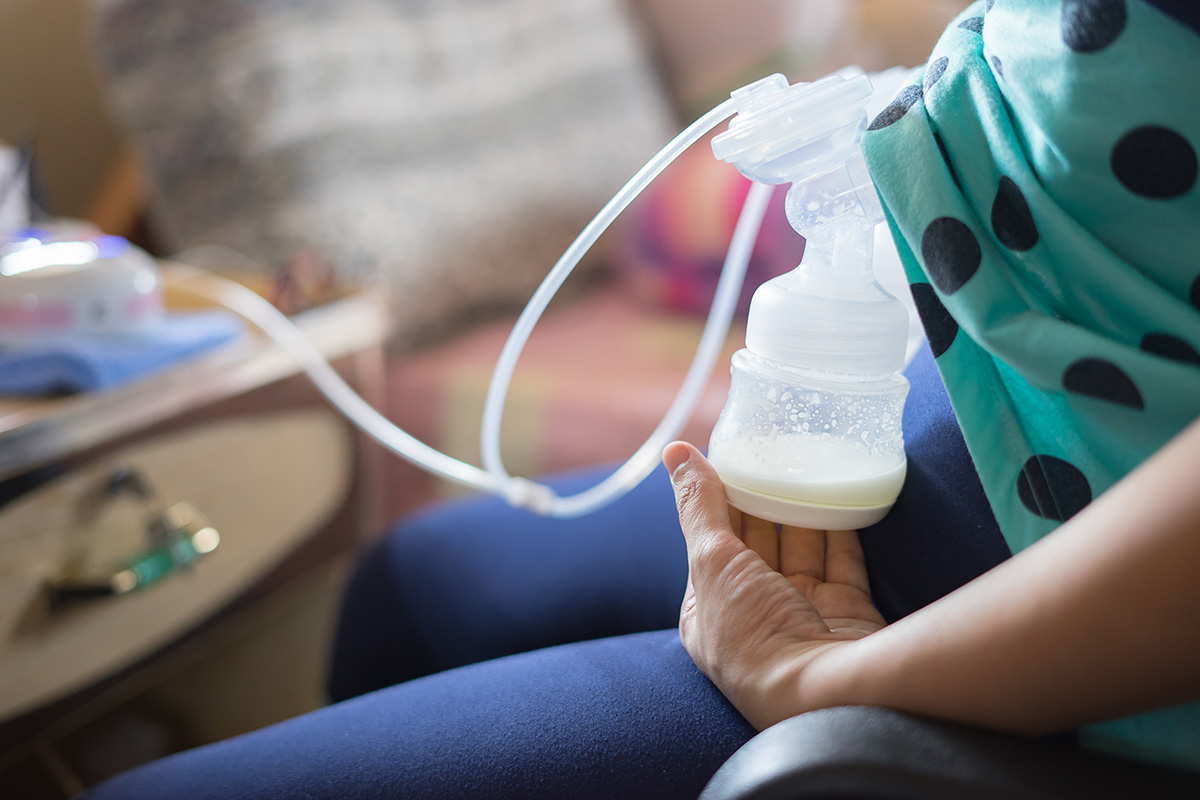Working and Breastfeeding
What are my rights as a breastfeeding employee?
The Providing Urgent Maternal Protections (PUMP) for Nursing Mothers Act, an extension of the Fair Labor Standards Act (FLSA), requires employers to support breastfeeding employees by providing:
- A reasonable break time to express breast milk for one year after your child’s birth.
- A clean, private, space that is not a bathroom to express breast milk.
A few kinds of employees are not covered under this law. For more information, visit the U.S. Department of Labor’s website.
How do I talk with my employer about my needs as I return to work?
If you work outside your home, talk with your employer before you return to your workplace about expressing breast milk during work hours. Having this conversation early will help make sure a plan is in place.
Talk with your employer about:
- Where there is a private, non-bathroom space to express breast milk.
- Where breast milk can be stored (e.g., refrigerator, insulated cooler).
- Where pump parts can be cleaned.
- What times are best for you during your work schedule for expressing milk.
The timing and length of breaks needed to express milk and clean breast pump parts may change from day to day and over time. It may be helpful to discuss this with your employer since they may not be familiar with the process of expressing milk or cleaning pump equipment.
How should I clean my breast pump kit parts at my workplace?
For best practices on cleaning pump kit parts, visit CDC’s page on cleaning breast pump hygiene.
What if I don’t have time to wash pump parts or have access to a sink and water to wash parts?
Careful cleaning of your breast pump parts after every use is important to prevent germs from contaminating the milk you feed your baby. Cleaning breast pump parts at work may require creative solutions depending on your workplace. Here are some ways that you might handle these challenges:
- Bring multiple breast pump kits to your workplace so that a clean kit can be used for each pumping session. Take used parts home after work and wash them all at once.
- If you have access to a microwave, rinse parts and then use steam bags made for cleaning breast pump parts. Some pump parts should not be steamed in the microwave, so be sure to check the manufacturer’s instructions.
- Learn how to hand express directly into milk collection containers.
Can I store my pump parts in the refrigerator between pump sessions while at my workplace?
The CDC and most breast pump manufacturers recommend cleaning pump parts after every use to help protect babies from germs.
More information about storing pump parts in the refrigerator between pumping sessions can be found on CDC’s FAQ page on breast pump cleaning.
Where can I store breast milk at my workplace?
- In the refrigerator: Expressed breast milk is a food and may be stored alongside other foods in any refrigerator that is appropriate for food storage.
- In an insulated cooler: You can store and carry freshly expressed milk in an insulated cooler bag with frozen ice packs for up to 24 hours. Once you get home use the milk right away, store it in the refrigerator, or freeze it.
Always label breast milk containers with your name and the date you expressed the milk. You can also label your cooler with your name and contact information.
How can I pump and store breast milk if my work requires travel?
For detailed information about travel, visit Travel Recommendations for Nursing Families.
What else might help me continue breastfeeding after returning to work?
- Practice using your pump or hand expressing breast milk before returning to work so you are comfortable with the process.
- Build a supply of frozen breast milk before returning to work.
- Think about how much breast milk you will need to leave at home or at childcare for your baby before your first day back at work.
- Think about how often you will need to pump or express breast milk while at work to have enough for your baby while you are apart.
- Once breastfeeding is going well, practice bottle feeding your breast milk so your baby will be used to a bottle while you are away at work. If your baby is having trouble taking a bottle at first, try having another adult feed your baby with the bottle. You can also try different types of bottles and nipples.

Tips for breastfeeding while working away from home
Breast/chestfeeding while working outside the home presents its own set of challenges, but with planning and support, it is entirely possible to continue providing human milk for your baby. Here are some tips to help you successfully navigate breast/chestfeeding and working outside the home.
Remember that this is a commendable effort that benefits both you and your baby. With determination, organization, and support, you can successfully continue your breast/chestfeeding journey while managing your professional responsibilities.

Tips for breastfeeding while working from home
Breast/chestfeeding while working from home offers a unique opportunity to balance both professional and parenting responsibilities. Here are some tips to make breastfeeding more manageable while working from home.
Remember that each day may bring different challenges, and it’s essential to be kind to yourself. Finding the right balance between work and parenting may take time, so be patient and make adjustments as needed to suit your and your baby’s needs.


